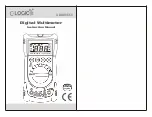
System Architecture
Introduction
...................................................................................................................................................................................................................................
The following sections describe the equipment architecture and the architecture and
functions of the option cards.
Functional building blocks
The different functions provided by the MI-16/4 and MI-14/4 main cards are:
•
Microprocessor and control circuits that manage different board elements, interfaces
(F-interface, LAN-Q, T3), and LEDs.
•
MI-16/4: Four STM-N (N=1, 4, 16) optical aggregate interfaces using SFPs for 2 x
STM-4/STM-16 and 2 x STM-1/STM-4 transmission. Upto 16 VC-4s are supported
on TS1.
MI-14/4: Four STM-N (N=1, 4) optical aggregate interfaces for SFP usage of two
STM-1/STM-4 multirate and two STM-1 single rate types.
•
In the transmit direction, the Line Interface performs the collection of AU4s and
the STM-N assembly. It performs RSOH/MSOH insertion.
•
In the receive direction, the STM-N Line Interface performs the STM-N
disassembly, the RSOH/MSOH extraction, sixteen, four or one AU4 management,
and the regeneration of data transmitted to the Higher Order (HO) Cross-connect.
•
The HO Cross-connect also performs Tansparent DCC processing. DCC bytes are
bi-directionally cross-connected in the VC-4 matrix and is processed through the
section overhead cross-connect towards the TDM interfaces.
The following diagram illustrates the MI-16/4 (2m/4o version) system architecture.
The following diagram illustrates the MI-16/4 (1m/1o version) system architecture.
Product description
...................................................................................................................................................................................................................................
365-312-847R4.0
Issue 4, November 2006
Lucent Technologies - Proprietary
See notice on first page
2-11
















































